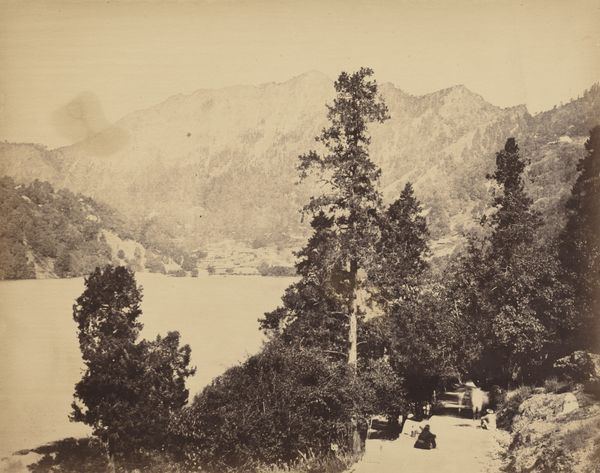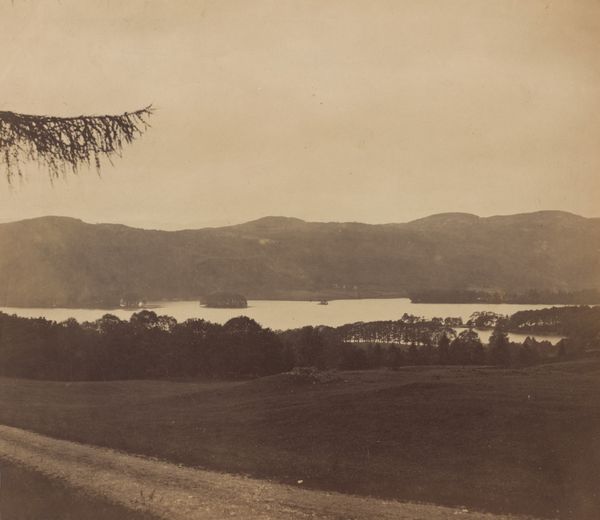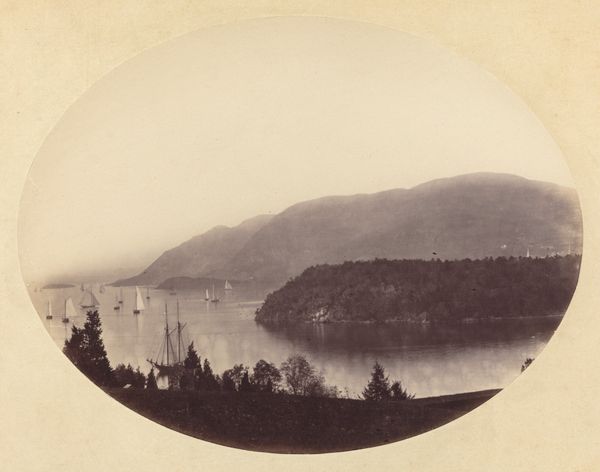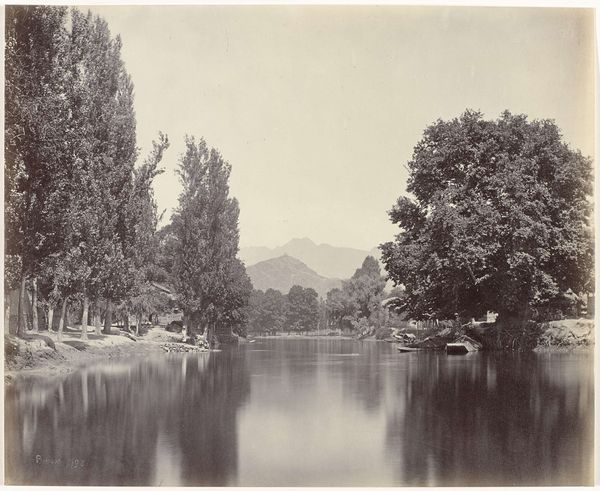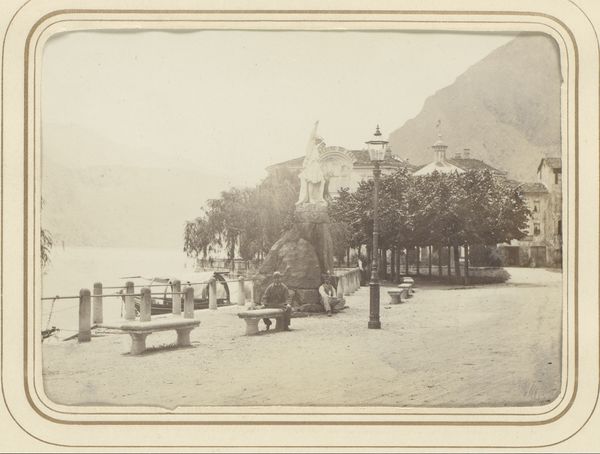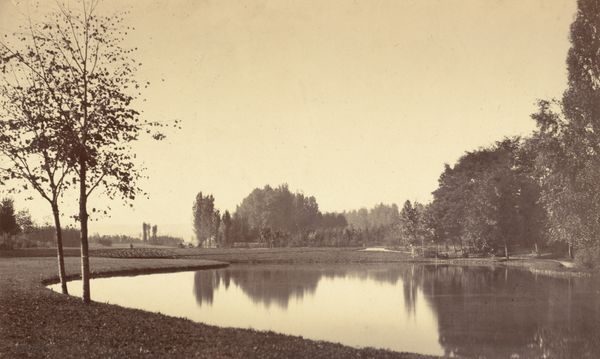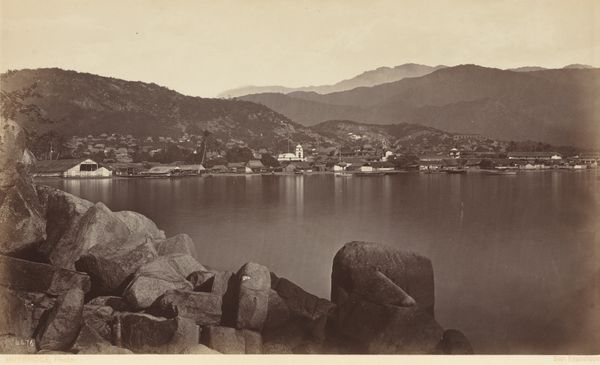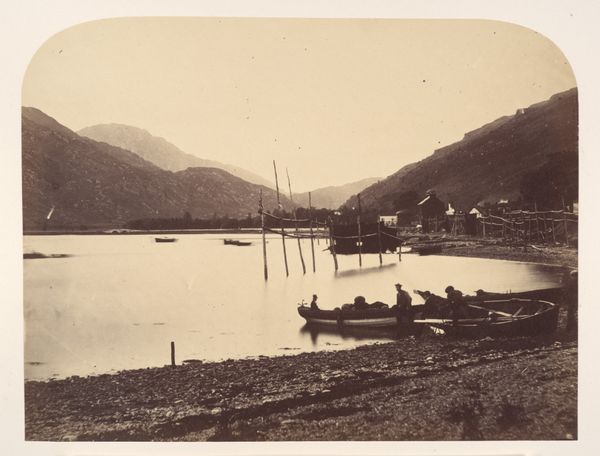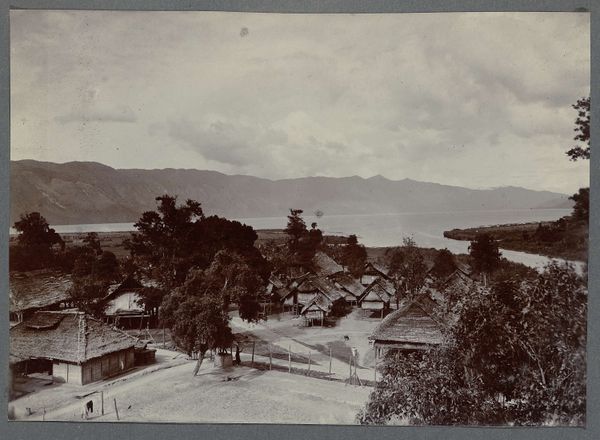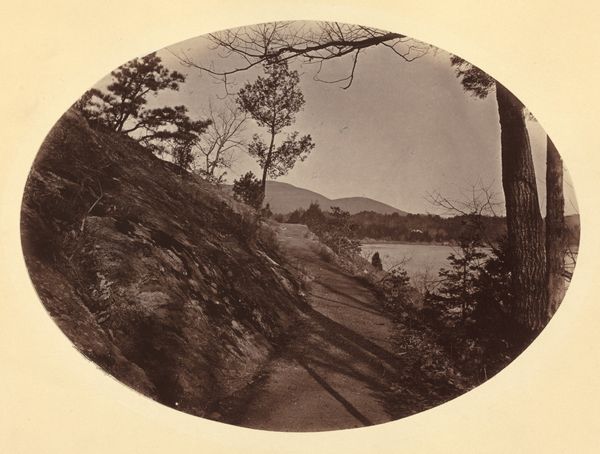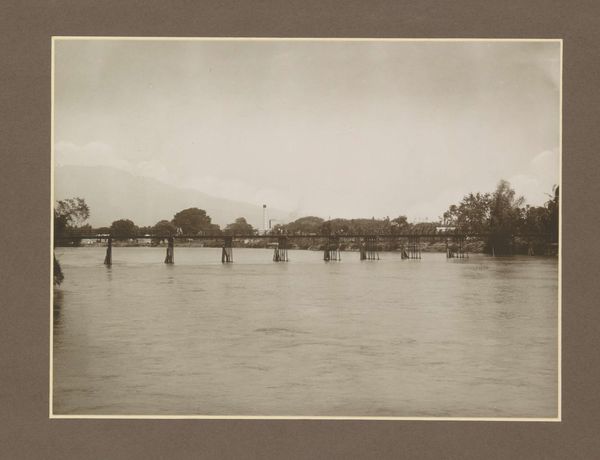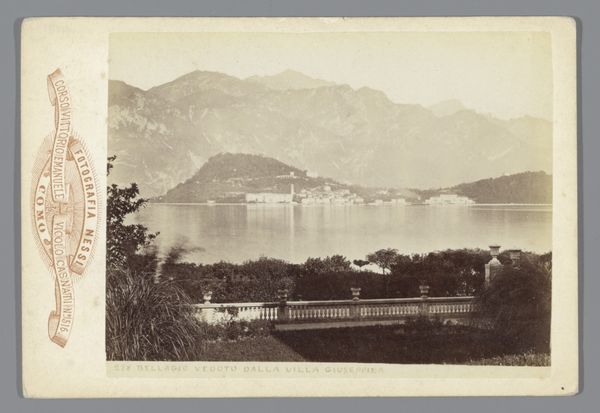
Dimensions: image/sheet: 23.9 × 29.3 cm (9 7/16 × 11 9/16 in.)
Copyright: National Gallery of Art: CC0 1.0
Curator: Let’s turn our attention to this albumen print from about 1865 by Samuel Bourne. He titled it "Kashmir Scene." Editor: My first impression is one of serene observation. The vast, somewhat desaturated tones create this nostalgic, almost romantic view, which really invites you to linger. The landscape seems vast and untouched despite the human figures dotted around. Curator: Bourne’s work often catered to a British audience back home. The aesthetic and choice of location can definitely be framed within the Orientalist movement, which romanticized and often exoticized the East for Western consumption. Think of how this landscape was seen and what narratives it constructed for its original viewers. Editor: Absolutely. The ‘untouched’ aesthetic you describe glosses over the impact of British colonialism. Whose land is this? How is Bourne’s work participating in constructing colonial power structures? He is framing a romantic vision of Kashmir while simultaneously omitting the real socioeconomic and political landscapes affected by colonialism. Curator: Indeed, Bourne was more than a photographer. He was an entrepreneur. He sold these images, tapping into the Victorian desire for adventure and empire. Photography became a tool to catalogue and possess foreign lands. Note how this image appeared within photograph albums, objects of display demonstrating global reach and status. Editor: So, while the composition and technique evoke tranquility, there’s also a clear implication regarding access, privilege, and the power dynamics inherent in who is allowed to depict, and thus interpret, a landscape. The romantic vision naturalizes this inequality. Curator: Exactly. We can enjoy the artistry while being critically aware of the power dynamics at play and the ways these kinds of images circulated to reinforce the colonial project. How do we acknowledge its complicated place within history, shaping both artistic traditions and imperial ideology? Editor: This piece certainly highlights how important it is for galleries to present images such as these with context and nuance, so viewers today understand them not simply as aesthetic documents but as participants in the larger history of representation and power. What do you see when you let these tensions be held within a photograph? Curator: For me, viewing such a seemingly idyllic image allows me to reflect on the enduring influence of visual media, questioning who gets to represent whom and what purposes their visions serve. It highlights photography's power to simultaneously reveal and obscure complex social dynamics.
Comments
No comments
Be the first to comment and join the conversation on the ultimate creative platform.
